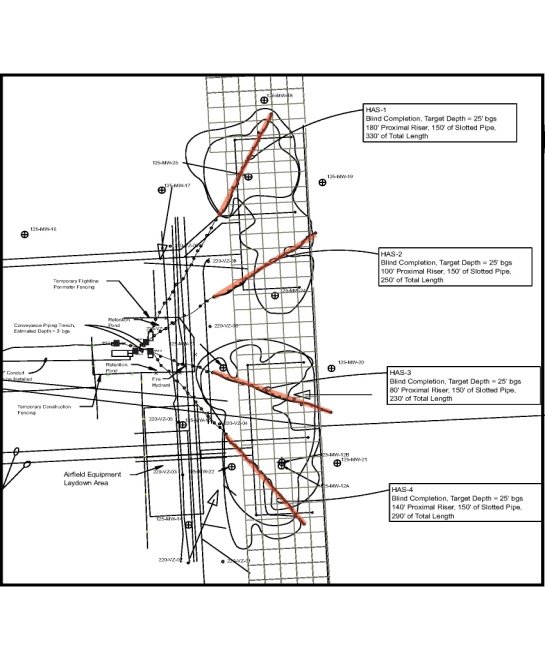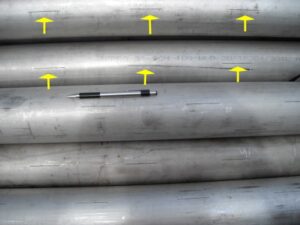 Air Force Base tarmac is a double-edged sword with respect to environmental remediation. Concrete thicker than at commercial airports virtually eliminates infiltration and limits migration of jet fuel constituents in groundwater, but source material in the vadose zone remains indefinitely, extending the life of the groundwater plume. Horizontal air sparging wells are effective means of addressing both saturated and unsaturated hydrocarbons beneath airport or air field tarmac, but they cannot be installed unless the drilling contractor can overcome a barrage of challenges, including:
Air Force Base tarmac is a double-edged sword with respect to environmental remediation. Concrete thicker than at commercial airports virtually eliminates infiltration and limits migration of jet fuel constituents in groundwater, but source material in the vadose zone remains indefinitely, extending the life of the groundwater plume. Horizontal air sparging wells are effective means of addressing both saturated and unsaturated hydrocarbons beneath airport or air field tarmac, but they cannot be installed unless the drilling contractor can overcome a barrage of challenges, including:
• Flight line traffic and work restrictions,
• Limited site access to work areas, and inability to place and operate drilling equipment on the tarmac,
• Aircraft noise,
• Signal interference to the drill head locating system caused by tarmac concrete and subsurface utility banks, allowing only highly trained and experienced horizontal well drilling specialists to keep the wellbore on target,
• Frequent interruption of the work schedule to accommodate aircraft, and
• Strict adherence to workday schedules.
Directional Technologies successfully overcame these challenges while installing four horizontal air sparging wells at an Air Force facility in the southeastern United States. The wells fan out over a span of about 120 degrees from a central drilling rig area, so the wells were like spokes of a wheel. Each well placed 150 feet of screen at 25 feet below the tarmac surface. The wells were drilled without exit points, and the tarmac remained free of excavation or any other invasive drilling-related activity. The tarmac was accessible for short periods of time for surveying purposes, and Directional Technologies developed a drilling program that accommodated limited, controlled access along most of the drill path. In spite of these limitations, the client received detailed as-built diagrams of the well paths and profiles.
 Local hydrogeology added to the challenges met by the Directional Technologies’ experienced drilling team. Heaving sands along portions of the well paths caused differential sticking of the drill string and well casing during drilling and installation. The drilling team resolved the problem efficiently by adjusting the drilling fluid program and completion method.
Local hydrogeology added to the challenges met by the Directional Technologies’ experienced drilling team. Heaving sands along portions of the well paths caused differential sticking of the drill string and well casing during drilling and installation. The drilling team resolved the problem efficiently by adjusting the drilling fluid program and completion method.
All four horizontal air sparging wells were completed with 3-inch schedule 10s slotted stainless steel screen. The screens were slotted longitudinally, with slots parallel to the axis of the pipe. Longitudinal slots were chosen to maximize pipe strength and air flow distribution. The slots were 0.011 wide, providing filtration control for the fine to medium sand in the target zone.